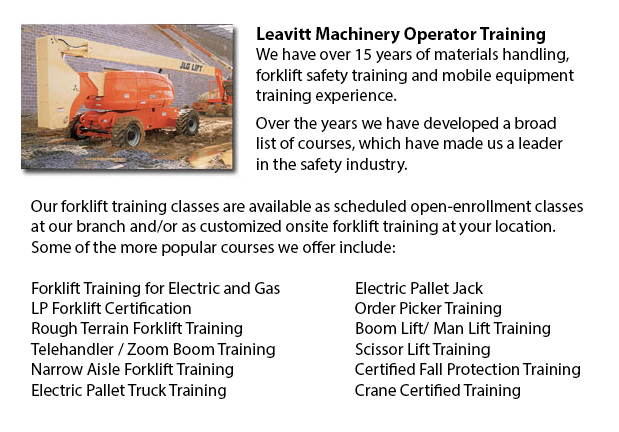
Boom Lift Safey Training Oakville - Boom lifts are a kind of aerial lifting device or elevated work platform that are commonly utilized in construction, industry, and warehousing. Boom lifts could be made use of in practically whatever surroundings because of their versatility.
The elevated work platform is used in order to allow access to heights which were otherwise inaccessible making use of other means. There are risks inherent when using a boom lift device. Workers who operate them must be trained in the right operating methods. Accident prevention is paramount.
Boom Lift Training Programs cover the safety aspects involved in boom lift operation. The program is suitable for those who operate self-propelled boom supported elevated work platforms and self-propelled elevated work platforms. Upon successfully finishing the course, participants would be given a certificate by somebody qualified to confirm completing a hands-on evaluation.
To be able to help train operators in the safe use of elevated work platforms, industry agencies, local and federal regulators, and lift manufacturers all play a role in providing the necessary information and establishing standards. The most essential ways in preventing accidents connected to the utilization of elevated work platforms are the following: wearing safety gear, conducting site assessment and inspecting machines.
Key safety considerations when operating Boom lifts:
Operators have to observe the minimum safe approach distance (MSAD) from power lines. Voltage can arc across the air to find an easy path to ground.
A telescopic boom must be retracted prior to lowering a work platform to be able to maintain stability as the platform nears the ground.
Boom lift workers must tie off to guarantee their safety. The lanyard and safety contraption should be attached to manufacturer provided anchorage, and never to other poles or wires. Tying off may or may not be necessary in scissor lifts, that depends on particular employer guidelines, job risks or local regulations.
The maximum slope will be specified by the manufacturer. Workers must avoid working on a slope, if possible. When the slope is beyond recommended conditions, the lifting device should be winched or transported over the slope. A grade can be simply measured by laying a minimum 3-feet long straight edge or board on the slope. After that a carpenter's level can be laid on the straight edge and the end raised until it is level. The percent slope is attained by measuring the distance to the ground (the rise) and then dividing the rise by the length of the straight edge. Then multiply by 100.
-
Order Picker License Oakville
Order Picker License Oakville - Order preparation operation or order picking as it is more normally known is a method used within warehouse operations and consists of employees called order pickers. The order picker's task is to collect and take arti... More -
Forklift Operator Certification Oakville
Forklift Operator Certification Oakville - Forklift operator certification is normally needed for personnel working within industrial, warehouse or construction setting to guarantee the safe utilization of forklifts. Workplace training need to follow... More -
Scissor Lift Certification Oakville
Scissor Lift Certification Oakville - A lot of worksites and tradespeople like iron workers, welders and masons utilize scissor lift platforms to help them reach elevated work areas. The utilization of a scissor lift is usually secondary to their tra... More -
Forklift Training Courses Oakville
Forklift Training Courses Oakville - When forklift operator safety training is customized for illiteracy, training time is reduced by 50%. Train the trainer, forklift training certification and lift-truck operator driver safety training evaluation pr... More -
Manlift Training Oakville
Manlift Training Oakville - There are numerous manlift training programs which offer a review of the manlift machinery. The practicum portion of the training is one more vital portion of the course. In this section the trainee has chance to demonstra... More -
Boom Lift License Oakville
Boom Lift License Oakville - To operate an aerial boom lift, operators should be licensed through training that can be obtained utilizing both classroom sessions and practical training and by attaining a boom lift license. Instruction should be given... More -
Crane / Overhead Crane / Self-Erect Crane / Truck Mounted Crane / Hydraulic Cranes Training in Oakville
Bridge cranes or likewise called overhead cranes are actually a type of industrial material handling crane using a line and hook mechanism that runs on a horizontal beam running along two widely separated rails. Several overhead cranes could be seen... More -
Telehandler Training in Oakville
Telescopic handlers normally called telehandlers for short, are an extremely popular piece of heavy construction machinery. They are widely utilized in the construction and agricultural trades. These machines have maximum reaching ability and could g... More

Forklift Training Oakville
TOLL FREE: 1-888-254-6157
Oakville, Ontario
forklifttrainingoakville.com
Email Us
About Us


